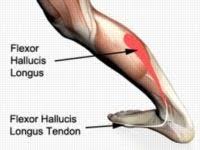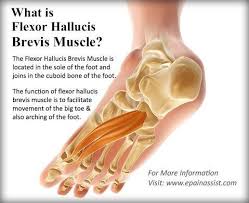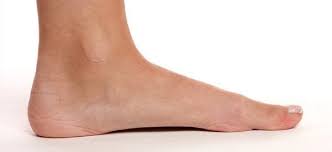Welcome to our last and final segment on our feet. Last week, we discussed why our two toe tests can deduct any possible restrictions in your Spinal (Fascial) line and also, what to do to “break” up these restrictions.
This week, we plan on going more in depth on how these tests works and what role our big toe plays while Freestyle kicking.
Let’s get started…
If you haven’t performed these two tests, [CLICK HERE] to be directed to Part I (or [HERE] for Part II)—so you can truly catch up on this subject. It is best that all readers have performed this tests on their own, before continuing reading on.
If you have completed the tests and already know the side of your body with a potential restriction—let’s dig in deeper.
Essentially, these two simple tests measure the strength of your Flexor Hallucis Brevis and your Flexor Hallucis Longus (tendon) on both of your feet. It is solely due to this muscle and tendon combination that you can perform test two.


What is interesting about this muscle, tendon combination is that many swimmers LOSE strength and function in this combination over time.
Why?
We don’t kick with our feet relaxed—we kick with them in the plantarflexed position! This plantarflex position strengthens the opposing muscle groups in a feet and causes us to lose the neurological connection that fires this muscle, tendon combination!
I’m sure you’ve seen plenty of swimmers with flat feet and low arches. Most swimmers (besides the ones born with flat feet) develop them over time due to extensive time spent in the plantarflexed position.

What does this mean?
Most swimmers will eventually LOSE the ability to move their big toe independently of the others!
Losing this connection will affect the swimmer’s gait, running pattern, ankle stability, knee strength, hip flexibility, and loads of lower back issues! Essentially, it can mess up your ENTIRE Spinal (fascial) Line! PLUS, your risk of injury exponentially increases!
This heightened injury risk can and will really affect a swimmer on land—in dryland, weights, or during their extra cardio routines!
Is it all making sense yet?
While kicking with your feet in a plantarflexed state is HIGHLY recommended by coaches, swimmers, and myself—you still want to make sure you keep your ability to move your big toe independently!
The normal range of motion within the big toe is close to 40 degrees in both directions!
If you are failing either (or both) of the two tests from Part I, start by performing 3 sets of 15 reps on each your feet (for both tests)–everyday.
Also, continue with the foam rolling routine from Part II and watch your shoulder pain decrease, while you significantly lower your injury risk!
Isn’t that something?
Until Next Time,
Abbie Fish

5 Responses
I appreciate you All three episodes were great.
I appreciate that!
In Part 2, there was no diagram that I could see. In Part 3, there was a blank space where the 2 strength tests should be. Why is this happening to me!??
Any other way for me to view these 3 parts and see ALL of them? I am viewing them from an email from you I received.
Should be fixed now! Whooops, sorry about that!